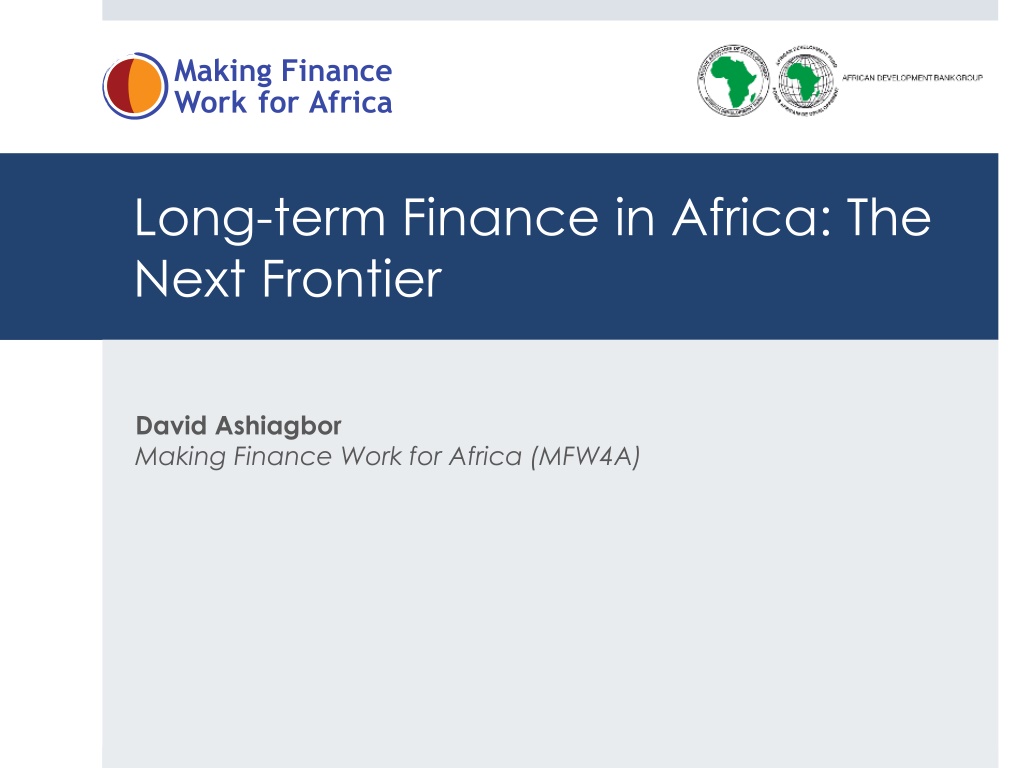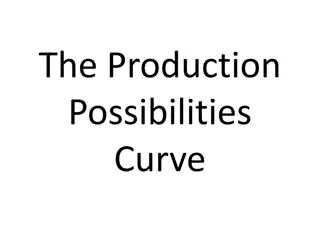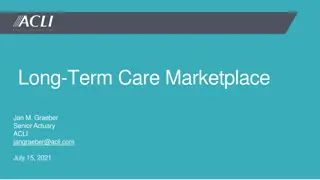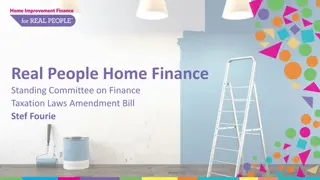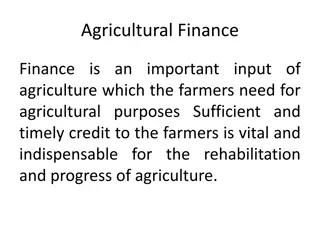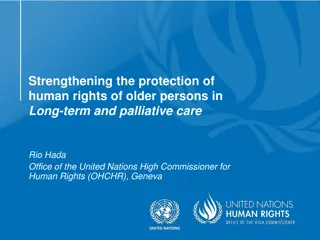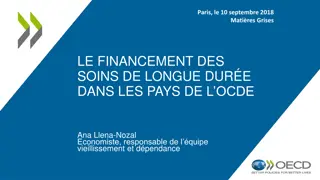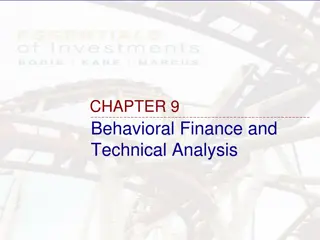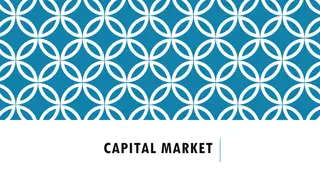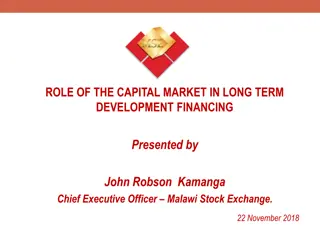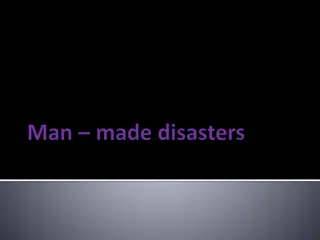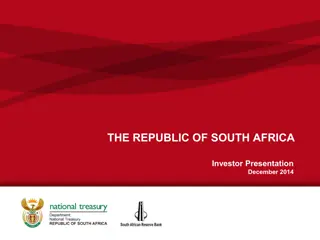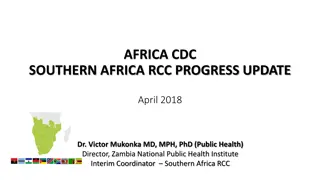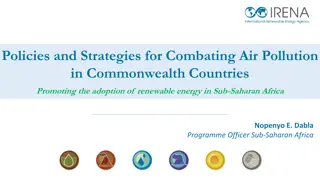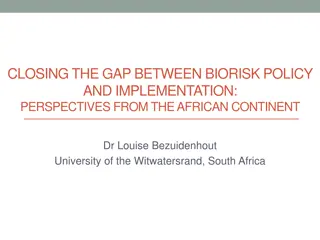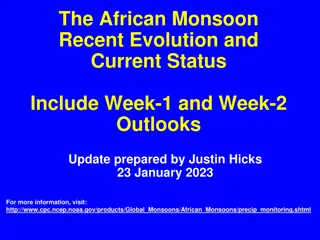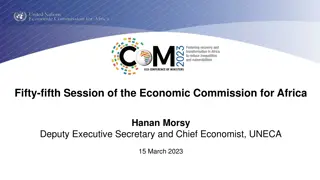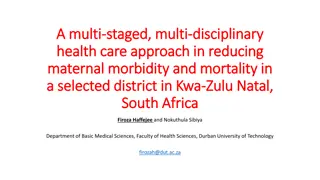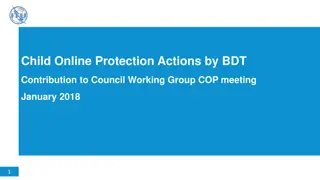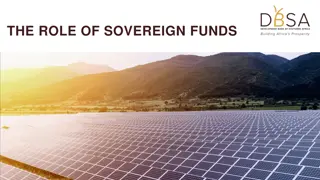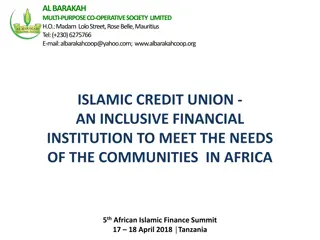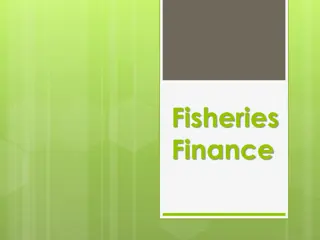The Next Frontier: Long-Term Finance in Africa
Making Finance Work for Africa (MFW4A) initiative aims to drive private investments, economic growth, and employment creation by harmonizing financial sector development in Africa. Through partnerships with donors, African governments, and the private sector, MFW4A addresses the continent's financing needs, particularly in infrastructure, to unlock Africa's financial sector potential for sustainable development.
Download Presentation

Please find below an Image/Link to download the presentation.
The content on the website is provided AS IS for your information and personal use only. It may not be sold, licensed, or shared on other websites without obtaining consent from the author. Download presentation by click this link. If you encounter any issues during the download, it is possible that the publisher has removed the file from their server.
E N D
Presentation Transcript
Making Finance Work for Africa Long-term Finance in Africa: The Next Frontier David Ashiagbor Making Finance Work for Africa (MFW4A)
Contents 1. About MFW4A 2. Africa s Financing Needs 3. Who is Financing Africa? 4. Financing Trends in Africa 5. Looking Forward 1
1. About MFW4A Development Partners The Making Finance Work for Africa (MFW4A) Partnership is a G8 initiative launched in October 2007. Its mission is the establishment of a common platform for the harmonization and facilitation of financial sector development and knowledge sharing in Africa. The Partnership brings together donor partners, African governments, the private sector, and other financial sector stakeholders with the aim of unleashing the full potential of Africa's financial sector in order to drive private investments, economic growth, employment creation. Strategic Priorities Long Term Finance Financial Inclusion Financial Stability and Governance Knowledge Management & Advocacy 2
2.Africas Financing Needs Market Capitalization as % of GDP 2012 (in percentage) North America OECD members World East Asia and Pacific (all income levels) Sub-Saharan Africa (all income levels) Europe and Central Asia (all income levels) South Asia Latin America & Caribbean (all income levels) Middle East & North Africa (all inclome levels) Sub-Saharan Africa (all income levels excluding South Africa) 0 20 40 60 80 100 120 140 Source: World Bank, WDI Database 3
2.Africas Financing Needs - Infrastructure Key facts Africa s infrastructure financing needs estimated at $US95 billion More than 30 African countries are now experiencing power shortages Africa invests only 4% of its collective GDP in infrastructure, compared with China s14% Transportation costs increase the prices of African goods by 75% 4
2.Africas Financing Needs - Infrastructure Infrastructure and Investment Gap Private Sector $9 billion DFIs $6 billion Financing Gap $50 billion Public Sector $30 billion Boost Africa s Growth Rates by 2% Bridging Infrastructure Investment Gaps 5
2.Africas Financing Needs - Housing Projected Population by Major Region 2010-2100 (In Millions) Source: UN Habitat The State of African Cities 2014 Housing Deficit Nigeria: Current housing shortage estimated at 17 million Ghana: 170,000 housing units are required every year for the next 10 years Kenya: 2 million housing units are required every year for the next 10 years
2.Africas Financing Needs - MSMEs Formal SME Credit Gap US$ in Billions High-Income OECD 600-700 Sub-Saharan Africa 70-90 Middle East and North Africa 260-320 South Asia 10-20 Latin America and the Caribbean 210-250 Europe and Central Asia 150-190 East Asia and the Pacific 150-180 Implied Increase in Outstanding SME Credit Percent (%) High-Income OECD 5-6 Sub-Saharan Africa 270-320 Middle East and North Africa 300-360 South Asia 13-16 Latin America and the Caribbean 100-125 Europe and Central Asia 25-30 East Asia and the Pacific 7-8 Source: IFC, 2013, Closing the Credit Gap for Formal and Informal Micro, Small and Medium Enterprises
3.Who is Financing Africa? Financing Flows from External Sources into African infrastructure, 2013 16 Billions 14 13.44 12 10 8 Germany UK France EC EIB AfDB WBG US China 7.01 6 4 2 0 Source: ICA 2013 Report on Infrastructure Trends in Africa 8
4.Financing Trends in Africa Sovereign Bonds Sub-Saharan Africa (ex. South Africa): Cumulative Sovereign Bond Issuance, 2006 2014 In $US Billions Ghana 2.6 Gabon 2.6 Kenya 2 Zambia 1.7 Nigeria 1.5 Senegal 1.2 Angola 1 Ivory Coast 0.7 Tanzania 0.6 Namibia 0.5 Rwanda 0.4 Seychelles 0.2 Source: Dealogic 9
4.Financing Trends in Africa Sovereign Bonds Sovereign Spreads and Credit Ratings (In Basis Points as of October 2014) Source: Bloomberg L.P. and Barclays Research 10
4.Financing Trends in Africa Domestic Sources Financial Sector Composition in Kenya, 2013 Percent Pension Funds Assets 17.0% Insurance Assets 8.9% Banking Assets SACCO Assets Insurance Assets Pension Funds Assets Banking Assets 65.9% SACCO Assets 8.2% Source: Kenya Financial Stability Report, 2013 11
4.Financing Trends in Africa Pension Funds Africa s Pension Industry Comparative Figures 300 80% 270 70% 250 60% 200 50% 150 40% 30% 100 20% 50 30 10% 10 8 6 3 3 0 0% Nigeria South Africa Kenya Botswana Ghana Namibia Uganda Pension Assets (US$bn) % of GDP 12
4.Financing Trends in Africa Pension Funds Nigeria High Growth Market: 8 year CAGR @33% AUM $USbn 60% 35 30 30 50% 24.9 25 40% 20 16.62 30% 15 15 13 20% 9.6 10 7 10% 5 0% 0 2008 2009 2010 2011 2012 2013 2014 13
4.Financing Trends in Africa Private Equity Africa PE fundraising reached $4.1bn in 2014 Total Value of Africa Private Equity Funds by Year of Final Close, in US$bn Source: AVCA 14
4.Financing Trends in Africa Private Equity Africa PE deal value reached a 7-year high in 2014 Total Value of Private Equity Deals in Africa, by year US$bn Source: AVCA 15
Key Messages Improved financial inclusion in Africa has been critical for financial sector development, and provides the basis for addressing the continents challenges in providing adequate long term finance; Africa s development agenda is crowded with opportunities waiting for appropriate financing and risk management strategies. Addressing these needs requires innovative financing solutions and appropriate regulation There is a need for financial sector development policies at the national level, encompassing all areas of finance, including inclusion, financial literacy and capital markets development in order to support long-term finance in Africa. 16
Making Finance Work for Africa David Ashiagbor d.ashiagbor@afdb.org Making Finance Work for Africa (MFW4A) Thank you ! www.mfw4a.org 17
